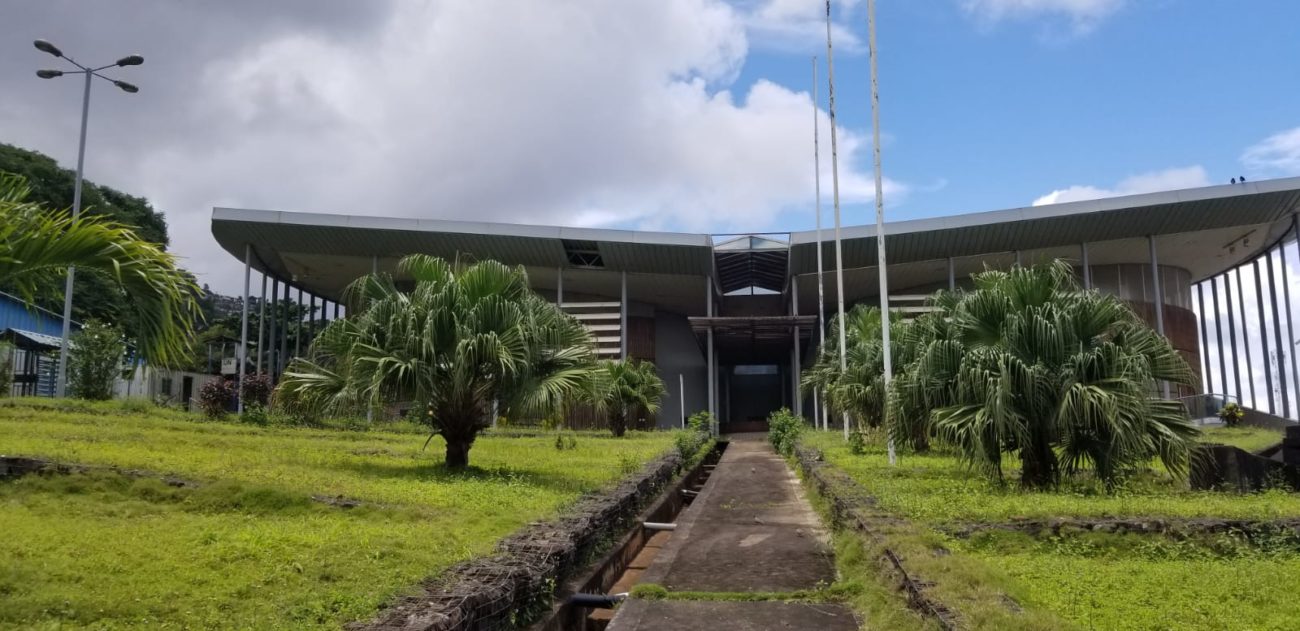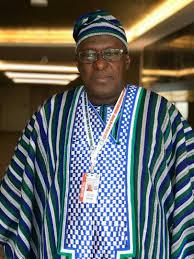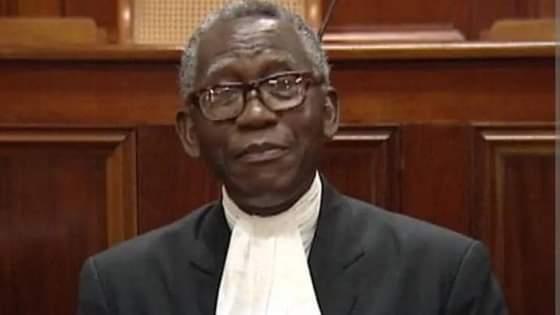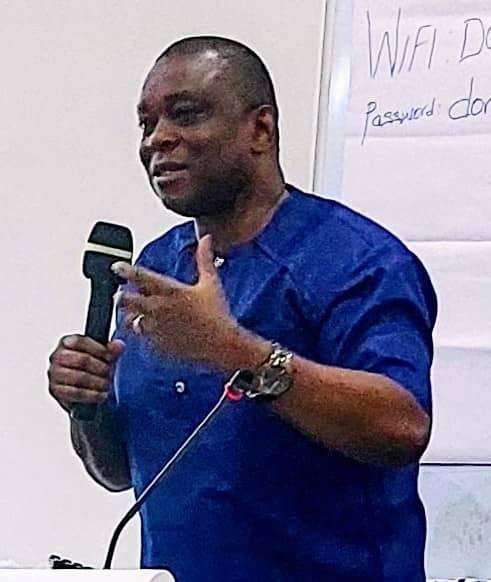Our $3.4 million Special Court is a show of shame
The 3.4 million dollar courthouse, with its two trial chambers at New England-Ville, is in a coma. The complex needs a life-support machine urgently. Failure to do so with the speed of an ambulance responding to an emergency call will only justify ammunition for grave-diggers of human past in describing it as the former courthouse of the UN-backed Special Court for Sierra Leone.
Let me refresh your memory. On October 3, 2003, workers of the Sierra Construction Systems, a local construction company began constructing the building. Eighteen months on, “A previously barren 12-acre piece of land has been transformed into a world-class international court complex with a Detention Facility and offices to accommodate 320 staff.”
Today, it is a far cry from what it was intended.
Fierce- looking and trigger-ready Mongolian troops once protected the concertina-wired 6ft high outer fence and probably 10ft inner wall of the complex. Snipers at the ready mounted sentry posts to protect the compound that was once the property of the Sierra Leone Prisons.
Mildly put, security inside these walls was water-tight that in March 2006, a UN-helicopter landed on a helipad inside the premises and offloaded handcuffed former President Charles Taylor of Liberia. Taylor, a fugitive on the run, had been indicted for war crimes and crimes against humanity in our civil war. He spent few nights in the detention centre at New England Ville before being flown to The Netherlands for trial.
Taylor aside, on a normal day, it was difficult to enter the complex. As a practising journalist then, I tried to get in. First, I made a request which had to be approved. Second, my name was sent down to the security post. Then, I had to go through rigorous screening before being issued a visitor’s pass. Still, an escort accompanied me.
Those days, on very well-kept lawns inside the compound of the Special Court, a pristine atmosphere, awaited you: paved driveways; a full-size UN flag on a white flagpole dominated the skies; dozens of fully air-conditioned pre-fab buildings stood at attention. Silence- sometimes graveyard silence prevailed. It was easy to spot the difference between the world outside the courthouse and the one inside. One was full of chaos, and the other was organised, disciplined, clean and on and on.
From an aerial view, the magnificent courthouse looked like a Flight Deck- a landing pad for jet fighters. For Ibrahim Tommy who worked at the Court as a Public Affairs Assistant, “The $3.4 million court building represented an emblem of the cooperation between the international community and the Government of Sierra Leone to ensure justice and accountability for the atrocities that occurred during the country’s 11-year civil conflict.”
Tommy, now a lawyer and the Executive Director for the Centre of Accountability and the Rule of Law (CARL) in Sierra Leone, had hoped that government would continue to use the building as a centre of justice, representing the government ’s willingness to address the justice needs of Sierra Leoneans.
Currently, the Law Reform Commission, the Justice Sector Coordination Office and the Residual Court (Special Court) all have offices at the property, but the under-utilised complex is today a pale shadow of its glorious past.
In September this year, I witnessed firsthand the terrible state of the courthouse. My visit followed an unannounced visit to the premises by President Bio. Attorney General and Minister of Justice- Priscilla Schwartz described the dilapidated condition of the facility as a stain on our country’s pride. She told the President, “The once splendid courtroom and its environs with fine trimmings and splendour that helped win justice for the people of Sierra Leone have suffered the worst assault.” She laid the blame squarely on the previous government, according to a Concord Times story.

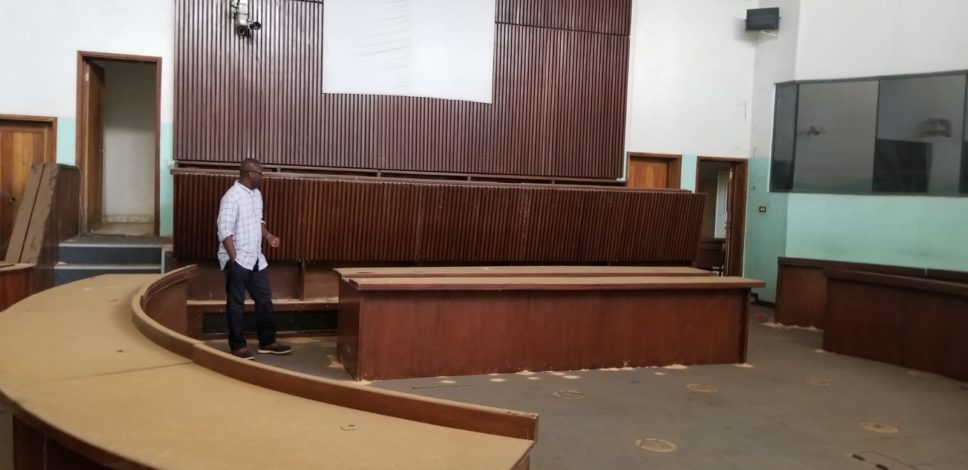
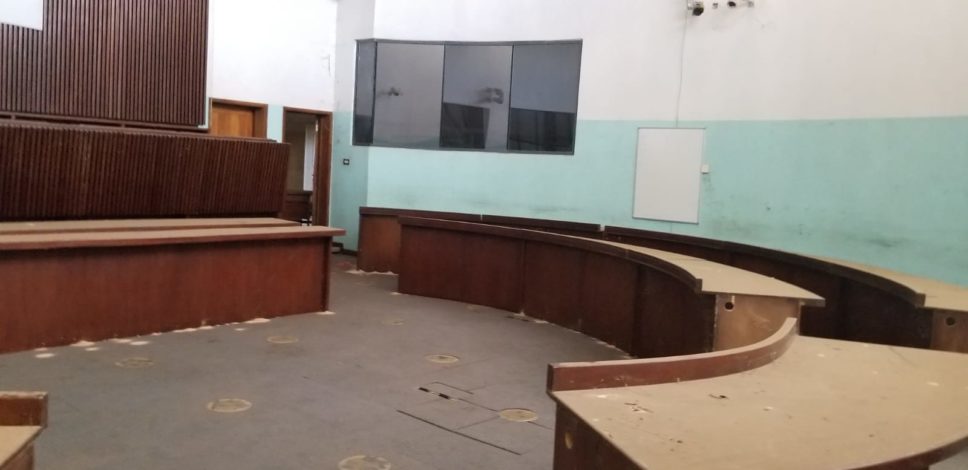
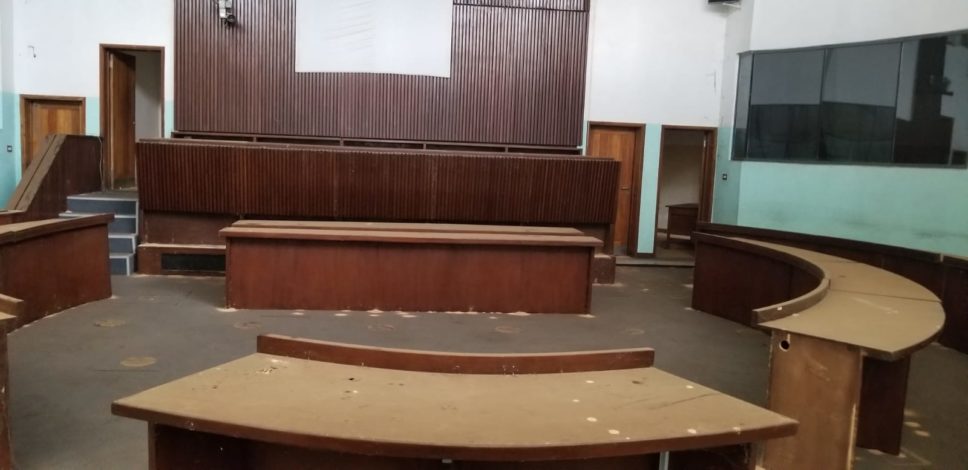
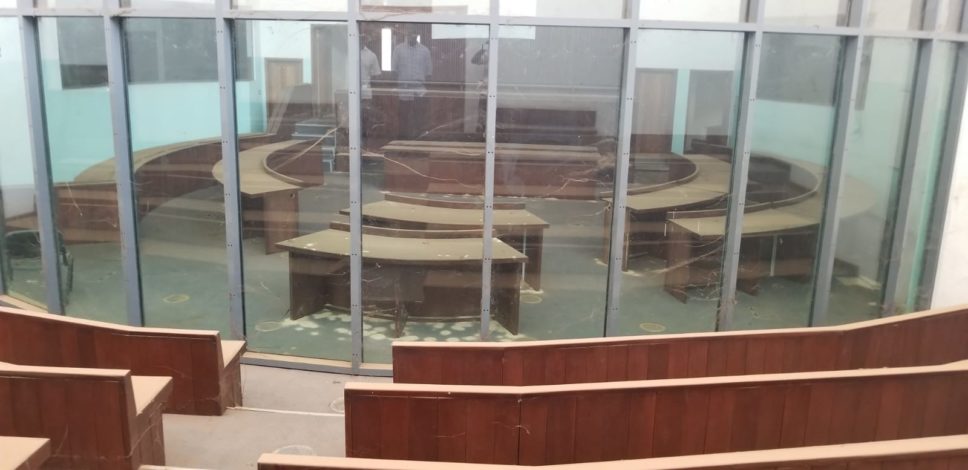
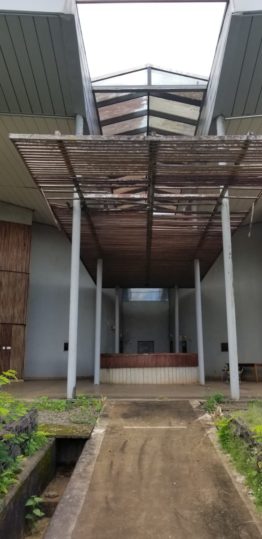
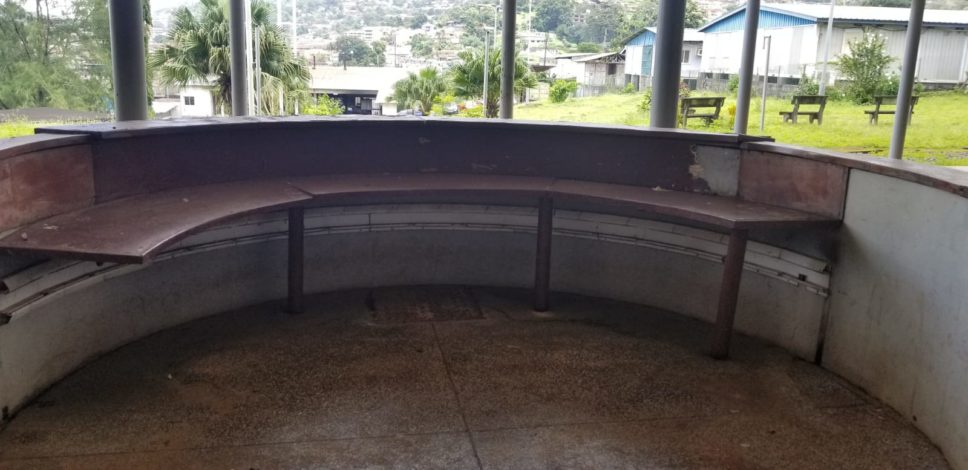
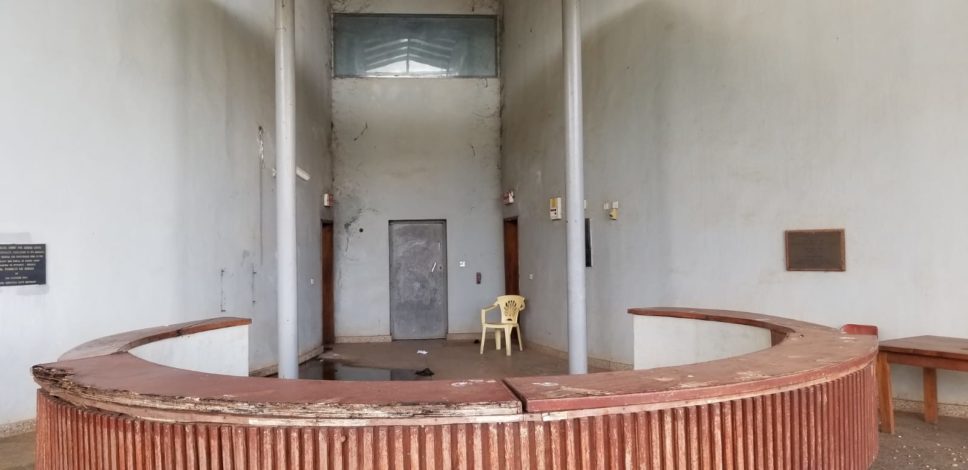
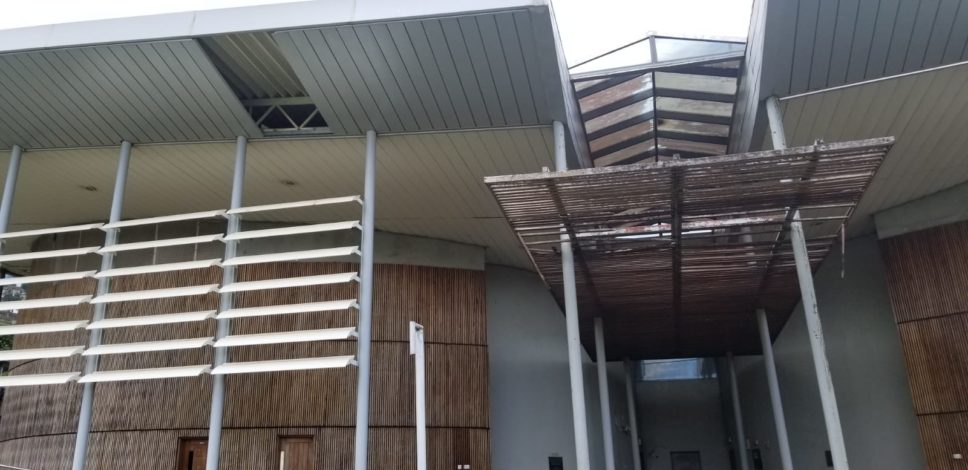
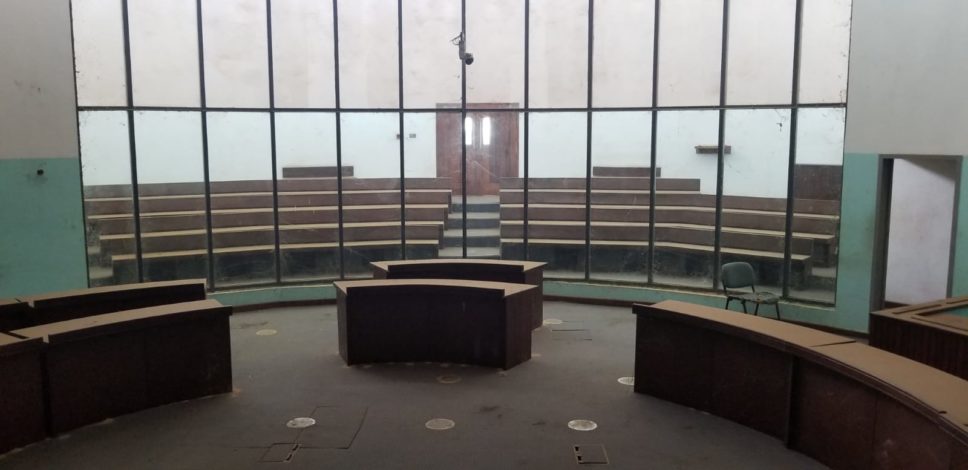
The truth is that the skeletal remains of what used to be the envy of many can make you cry. Looted air-conditioners have created unsightly holes on the walls of the pre-fab buildings, and those not looted are in disrepair.
Heavy-duty generator carcasses have been left to rot in what looks like a junkyard. There are decaying empty fuel tanks emptied of every drop of fuel they once stored. Broken doors left ajar. Washed-out painted walls. Scrappy floors. Spiders. Cobwebs. Broken ceiling.
Reptiles are now in charge of what was expected to be the Supreme Court and, “a legacy for what the courthouse has achieved.” The story of the courthouse is another sad one!
At a symbolic ceremony on December 2, 2013, then Chief Justice Umu Hawa Tejan- Jalloh promised, “The Judiciary of Sierra Leone will ensure that these courtrooms are well maintained and put to good use, to dispense justice and enhance the rule of law and our own jurisprudence.”
As Justice Tejan-Jalloh spoke, Sierra Leonean-born Special Court Registrar, Binta Mansaray, who had earlier handed an over-sized ceremonial key to then-Attorney General and Minister of Justice, Frank Kargbo, beamed with smiles and nodded her agreement. She might have hoped that the beautiful edifice that once adorned the skylines of New England Ville environ would not be run-down as speedily as it now shamefully looks to the entire world.
Five years on, Madam Chief Justice’s promise is sadly not kept. Once again, and unfortunately, it is a sad reminder that our maintenance culture stinks. Go to Youyi Building, the National Stadium, the Central Bank, Electricity Building and so on. The story is the same.
For Ibrahim Tommy, the courtroom is in a disgraceful state of disrepair. “It sadly reflects Sierra Leonean government’s lacklustre attitude to justice and its human rights obligations.” The once state- of -the- art courthouse with bulletproof glass screens and a computerised system in which the Kamajor leaders, the RUF and the AFRC were tried is in a decrepit state. Charles Taylor, Ibrahim Bazzy Kamara, Issa Sesay, Moinina Fofana, Augustine Gbao and Allieu Kondewa had their day in court right in that courthouse.
Mr Tommy hopes that the new administration will go beyond expressing outrage about the embarrassing state of the building and give it a face lift worthy of the efforts and dreams of those who handed it over to us. “This was clearly one of the best judicial environments across the West African sub-region,” he said.
On Facebook, Yasmin Jusu-Sheriff, a celebrated lawyer in the country commented, “On a more serious note, the ‘prize-winning design’ complex was never appropriate for our justice system. The cost of just the electricity required to keep the Special Court lit, cool and secure could probably run several district-level court complexes.”
Nevertheless, the naked misuse of a national treasure handed to us just some five years ago does not speak well of how we take care of national assets. This is a shame. It is a disgrace to all of us, and someone must speak truth to power. I hope the authorities hear this and resuscitate the life of the near comatose state of our Special Court courthouse and its complex.
By Osman Benk Sankoh
Stay with Sierra Express Media, for your trusted place in news!
© 2018, https:. All rights reserved.



